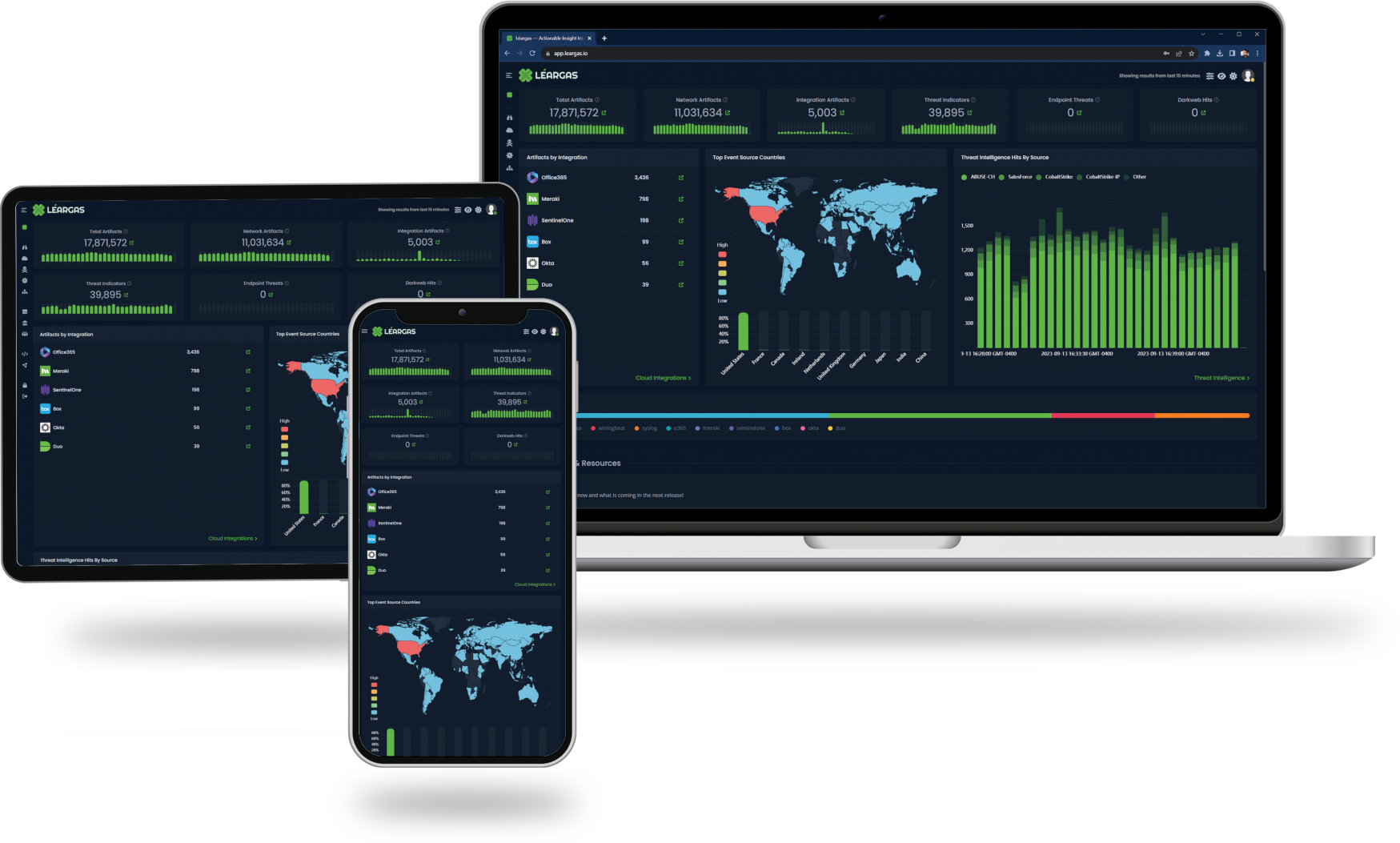
BLOG
The Importance of Normalization and Scoring of Threat Intelligence Artifacts

In the present-day, interconnected world, businesses confront an expanding threat landscape. To safeguard themselves from cyber threats, organizations rely on threat intelligence, which is one of the most valuable tools available. However, the effectiveness of threat intelligence hinges on the quality of its data. That's why normalization and scoring of threat intelligence artifacts are two indispensable procedures that guarantee high-quality data.
At Léargas Security, we spend a great deal of effort in properly normalizing and scoring data, as this creates greater efficiency in resolving security incidents before they become unmanageable. Let's break down what that means.
Normalization is the process of standardizing threat intelligence data to a common format that can be easily consumed by different security tools and platforms. Threat intelligence data comes from various sources, including open-source intelligence (OSINT), closed sources, and subscription-based feeds. The data can have different structures, formats, and terminologies, which can make it challenging to process and use.
The process of normalization involves mapping the data to a standardized structure and vocabulary. For example, IP addresses can be represented in different ways, such as 10.0.0.1, 10.0.0.0/24, or 0A000001 (hexadecimal). Normalization ensures that all IP addresses are represented in a consistent format, such as IPv4 notation (e.g., 10.0.0.1). Normalization also ensures that the same threat intelligence data is not duplicated or fragmented across different sources.
Normalization of Zeek and Suricata data is crucial to ensuring the flow data is consistent, structured, and compatible with different security tools and platforms. Zeek and Suricata are open-source network security monitoring tools that generate extensive log data, including network traffic, alerts, and metadata. However, the data generated by these tools can be complex and diverse, leading to inconsistencies and difficulties in processing the data. Therefore, normalization involves mapping the data to a standardized format, sometimes referred to as a "Community ID", that can be easily interpreted and analyzed by other security tools and platforms, such as Léargas Security. By normalizing Zeek and Suricata data, security analysts can gain a complete view of network activity, detect anomalies, and respond to potential security incidents quickly. Normalization also enables security teams to develop accurate threat models, identify patterns, and track changes in network activity over time, improving their ability to detect and respond to emerging threats.
Which leads us to the scoring of the normalized data.
Scoring is the process of assigning a numerical value to threat intelligence data to indicate its level of relevance, reliability, and severity. Scoring allows organizations to prioritize their response to threats based on their potential impact. The scoring system can vary depending on the organization's needs and the type of threat intelligence data. However, a common scoring system is the Common Vulnerability Scoring System (CVSS).
CVSS provides a standardized framework for scoring the severity of vulnerabilities based on their impact, exploitability, and other factors. CVSS scores range from 0 to 10, with higher scores indicating a more severe vulnerability. CVSS scores enable organizations to prioritize their patching and mitigation efforts based on the severity of the vulnerabilities.
It is important to understand that the importance of a score is directly correlated to the context in which that scored vulnerability resides in an organization.
Scoring threat intelligence data enhances operational efficiency in several ways. Firstly, it enables organizations to prioritize their response to cyber threats based on the severity of their impact. This prioritization allows organizations to focus their resources on the most critical threats first, reducing the response time to a potential breach. Consequently, they can mitigate the impact of the threat more efficiently, minimizing the damage caused and the costs associated with responding to the breach. Scoring also aids in tracking the effectiveness of security measures and identifying gaps in security posture, enabling organizations to allocate resources strategically to enhance their security posture.
Secondly, scoring allows organizations to share threat intelligence data more efficiently. By using a standardized scoring system, organizations can communicate threat intelligence data to their partners and third-party vendors with ease. This shared intelligence empowers partners and vendors to take the necessary precautions to protect themselves and their customers from the threat. Therefore, scoring threat intelligence data improves collaboration and strengthens partnerships between organizations, enhancing their collective defense against cyber threats. Overall, scoring of threat intelligence data enhances operational efficiency, enabling organizations to manage their cyber risk proactively and safeguard their assets and customers.
Normalization and scoring of threat intelligence artifacts are essential for effective threat intelligence operations. Normalization ensures that threat intelligence data is standardized and easy to consume, while scoring allows organizations to prioritize their response based on the severity of the threats. Without normalization and scoring, threat intelligence data can be unreliable, inconsistent, and difficult to use, leading to missed threats and increased risk.
To sum up, the crucial processes of normalizing and scoring threat intelligence artifacts guarantee the quality and efficacy of threat intelligence data. This is why Léargas Security prioritizes the process of properly contextualizing and scoring observed vulnerabilities and threat feed artifacts to help organizations manage their cyber risk efficiently and safeguard their assets and customer's data.
MORE FROM THE BLOG
SCHEDULE YOUR LÉARGAS XDR DEMO NOW
Take a proactive stance in safeguarding your digital assets.
SOLUTIONS FOR ANY SECTOR
Tailored Security Excellence for EMCs, Enterprises, Government, and MSSPs
Whether you're an Enterprise seeking fortified defenses, a Government entity safeguarding national interests, an EMC with vital assets to protect, or an MSSP looking to empower clients with cutting-edge security, Léargas has crafted specialized solutions for you.

© Copyright Léargas Security. All Rights Reserved.





